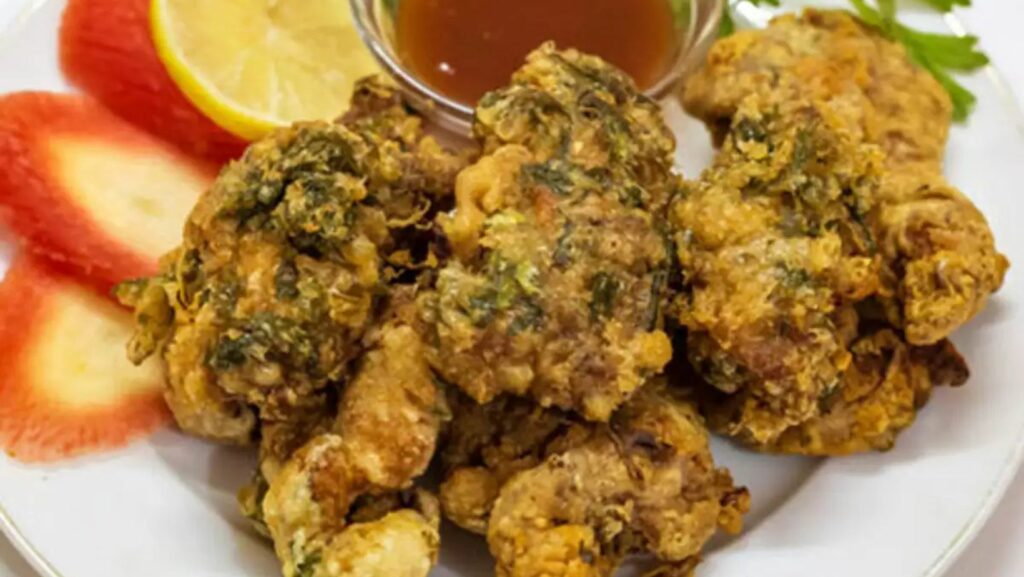Food has a magical way of bringing people together, telling stories, and adding a little mischief to life. Just look at crispy Bhaang ke Pakore, a dish you might be served if you stood on a bright, chaotic street in India during the festival of Holi.
What’s in this dish, you ask? Just a sprinkle of tradition, a dollop of culture, and, oh yes, a little bit of bhaang — India’s festive twist on cannabis.
If you’ve never heard of Bhaang ke Pakore before, buckle up. This isn’t your ordinary snack.
What Is Bhaang?
Before we dive into the pakoras, it’s important to talk about what makes them so special: bhaang. Derived from the leaves and buds of the cannabis plant, bhaang has been part of Indian culture for centuries. Unlike its more infamous counterpart, marijuana, bhaang is milder in its effects and is deeply rooted in traditional Indian rituals and festivities.
Bhaang paste, often mixed with milk or water, has long been consumed as a way to honor Shiva, the Hindu god associated with asceticism and spiritual intoxication. It’s also used to make thandai, a sweet, spiced milk drink that’s practically synonymous with Holi. The ingredient is celebrated as a way to let loose, embrace joy, and immerse yourself in the revelry.
Bhaang ke Pakore: The Festive Snack
At first glance, Bhaang ke Pakore fritters might look like any other pakora — a beloved Indian snack made by frying spiced batter-coated vegetables or other fillings. However, the addition of bhaang gives these treats their playful edge. Served during Holi and other special occasions, Bhaang ke Pakore is both a culinary delight and a cultural experience.
These fritters are crispy, flavorful, and carry just enough bhaang to lift your spirits without overwhelming your senses. They’re typically served with tangy mint chutney or a zesty tamarind dip, creating a perfect balance of flavors.
Bhaang ke Pakore is a festive indulgence that stands in delightful contrast to the practicality of other healthy prepared meals you may enjoy during your favorite holidays. While nutritious, pre-packaged options are perfect for fueling your busy lifestyle with balance and flavor, Bhaang ke Pakore reminds us that food can also be about celebration, tradition, and savoring life’s joyful moments.
How Do You Make Bhaang ke Pakore?
Making Bhaang ke Pakore is as much about the process as it is about the final product. The batter starts with chickpea flour (besan), a handful of aromatic spices like cumin, turmeric, and chili powder, and a dash of salt. Bhaang paste is then carefully added to ensure the right balance for both flavor and effect.

Vegetables like onion, spinach, or potato are dipped into the batter, then fried to golden perfection. Once fried, the pakoras are best served hot, with a generous dollop of chutney on the side.
How Do You Eat Bhaang ke Pakore?
Obviously, bhaang isn’t your everyday spice or herb. While it adds a bit of celebratory fun to Bhaang ke Pakore, moderation is key.
Because bhaang contains psychoactive properties, it’s important to enjoy these pakoras responsibly. The effects can vary depending on how much is consumed and individual tolerance levels. A little can make you feel relaxed and happy, while too much might leave you feeling … well, a bit too “celebratory.”
It’s also worth noting that while bhaang is legal and widely accepted in many parts of India, the rules and attitudes around it can differ elsewhere. If you’re trying Bhaang ke Pakore outside of India, make sure you’re aware of local laws and regulations.
When in doubt, stick to the traditional pakora recipe — minus the bhaang — so you can still enjoy the crunchy goodness without any legal worries.
Beyond Bhaang ke Pakore
Bhaang ke Pakore is just one snapshot of Indian culture. Food plays a central role during Holi, a festival that celebrates the triumph of good over evil and the arrival of spring. Families gather to share meals, friends throw colored powders in the air, and everyone indulges in sweets and savory treats, often infused with bhaang.
This isn’t the only festive food where bhaang makes an appearance. Bhaang laddoos, a sweet treat made with nuts and cannabis paste, are equally popular in certain regions.
It’s fascinating to think about how food connects us to culture and history. While Bhaang ke Pakore offers a playful twist on tradition, it’s also a reminder of how culinary practices evolve to bring people together.
Why Should You Try Bhaang ke Pakore?
If you’re in a place where Bhaang ke Pakore is legal and culturally appropriate, why not? It’s a dish that offers an experience, a tradition, and a conversation starter, all rolled into one crispy bite.
Even if you’re just learning about them from afar, Bhaang ke Pakore is a great example of how food can reflect the unique personality of a culture. Next time you hear someone mention Bhaang ke Pakore, you’ll know it’s not just a snack — it’s a symbol of joy, community, and a little festive mischief.

